The article below has been forwarded to Kavehfarrokh.com by Sheda Vasseghi. Kindly note that a number of pictures and their accompanying captions have been inserted by Kavehfarrokh.com into the original text by Sheda Vasseghi. A number of sentences and paragraphs have also been added by Kavehfarrokh.com (esp. after the Chinese map of 1418) into the Sheda Vasseghi article.
Sheda Vasseghi has a Master of Arts in Ancient History, with honors, emphasis on Ancient Persia, from American Military University (West Virginia) and a Master of Science in Business Administration from Strayer University (Washington, DC). Ms. Vasseghi is an adjunct professor of history at Northern Virginia Community College. She is also a correspondent with Freepressers in relation to Iran’s affairs. Ms. Vasseghi is a spokeswoman for Azadegan Foundation, a non-profit organization in support of a secular, democratic Iran. She joined persepolis3D in 2003 in handling historical consultation on Iran’s history as well as public relations matters. Ms. Vasseghi may be contacted in relation to the following: (1) planning exhibitions for advertising purposes in promoting historical and cultural awareness of ancient and modern Iran (2) educational services such as conducting and providing classes, workshops, and seminars featuring interviews and speeches in the field of Iranian affairs (3) custom writing services in the field of Iranian affairs and (4) writing of articles for professional journals in the field of Iranian affairs. Ms. Vasseghi may be contacted at [email protected].
================================
The Chinese word HUI (“whey”) referred to all immigrant Muslims of different ethnic groups such as Arabs, Persians and Turks residing in China. According to the 13th c. Persian historian Juvaini, after the fall of Central Asian cities such as to Mongolians, the lives of some 100,000 artisans and craftsmen were spared by the Mongols after they conquered Samarqand and Bukhara: the Mongols forcibly deported them to China. These were the founders of many early Hui communities.
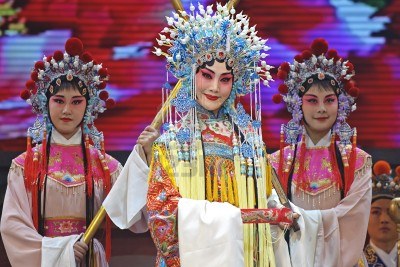 Chinese Hui opera performer on stage during the 25th Chinese Drama Plum Blossom Award competition at Xinan theater (June 4, 2010 in Chengdu, China). The Drama Plum Blossom Award is the highest theatrical award bestowed by China (Picture source: 123RF).
Chinese Hui opera performer on stage during the 25th Chinese Drama Plum Blossom Award competition at Xinan theater (June 4, 2010 in Chengdu, China). The Drama Plum Blossom Award is the highest theatrical award bestowed by China (Picture source: 123RF).
During the Yuan dynasty (1271-1368), the three dominant administrative languages became Chinese, Mongolian and Persian. Michael Dillon has noted on the persistence of Persian words and the “special” vocabulary that continue to permeate among the Hui communities.
Descendants of the Hui also mixed Confucianism with their ancestral beliefs. Given ancient Iranian tradition and philosophy in relation to the concept of law (Old Persian “dada”), one may not bypass the notable 16th c. Hui personality in Chinese history known as “the incorruptible and upright judge Hai Rui,” who is a political icon for having been credited with cleaning up corruption in regional government. On another matter, note the similarities between Hui ethnic clothing with Iranian Tajiki attire as seen in the music video below: Ethnic Hui folk song “Flower and Juvenile” performed by Hui pop singer Ha. The Mail article “Does this map from 1418 prove historian’s controversial claim that the New World was discovered by the CHINESE 70 years before Columbus?” has stirred a considerable amopunt of controversy. The article pertains to the famous Chinese explorer and diplomat Admiral Zheng He (1371–1433) who was of Persian descent. His great great great grandfather was a Persian called Shams al-Din Omar, who was appointed as governor of Yunnan during the Yuan Dynasty (1271-1368). His great grandfather’s name was Bayan. As a man of science, Zheng He is credited with having improved the places he visited by introducing them to the calendar, meteorological system, medical advancements, technologies of agriculture, manufacture, and the like. Tradition has it that because of Zheng He’s visit, the people of Malacca learned how to build city walls and dig water wells. Zheng He is also credited with having taught the Siamese water treatment and how to fertilize farmland. In 1911, the “Zheng He Stele” dated 1409 was discovered in Sri Lanka. The stele not only describes Zheng He’s donations to the Buddhist temple, but in accordance with his Iranian ancestral spirit of tolerance, Zheng He and his company paid respect to all local deities and customs. Perhaps most intriguing is a recent discovery of an ancient Chinese map dated to 1418. This map is claimed to show the Americas. If true, this would indicate that the Chinese knew of the Americas centuries in advance of the Europeans. Such a paradigm shift would challenge the notion that Christopher Columbus was the first explorer to discover the New World. At the time of his death, Zheng He had visited 38 countries in 28 years. Ironically, in 1433, Zheng He died while returning from a trip to his ancestral homeland, Kingdom of Hormuz within the Persian Gulf! As the case with many great admirals, he was buried at sea. The links between China and Turco-Iranian or Persianate civilization continue to endure. The two realms have had a rich interchange of culture, especially in cuisine, technology, musical instruments and the arts. Mehdi Farrokh wrote a book on his mission to China entitled “Safar be Keshvar e Asrar Amiz e Chin” [Travel to the Wondrous/Mysterious Country of China]” in which he highly praised the people, culture, cuisine, civilization and work ethic of China. Mehdi Farrokh also noted the deep sense of integrity, intelligence, kindness, and spirit of generosity in the person of Chiang Kai Shek and all Chinese whom he had the opportunity to contact during his mission to China. This book along with scores of others from the late Mehdi Farrokh’s office, had been donated by Kaveh Farrokh to the “Ketabkhaneye Melli Iran” [National Library of Iran] in Tehran in the summer of 2001.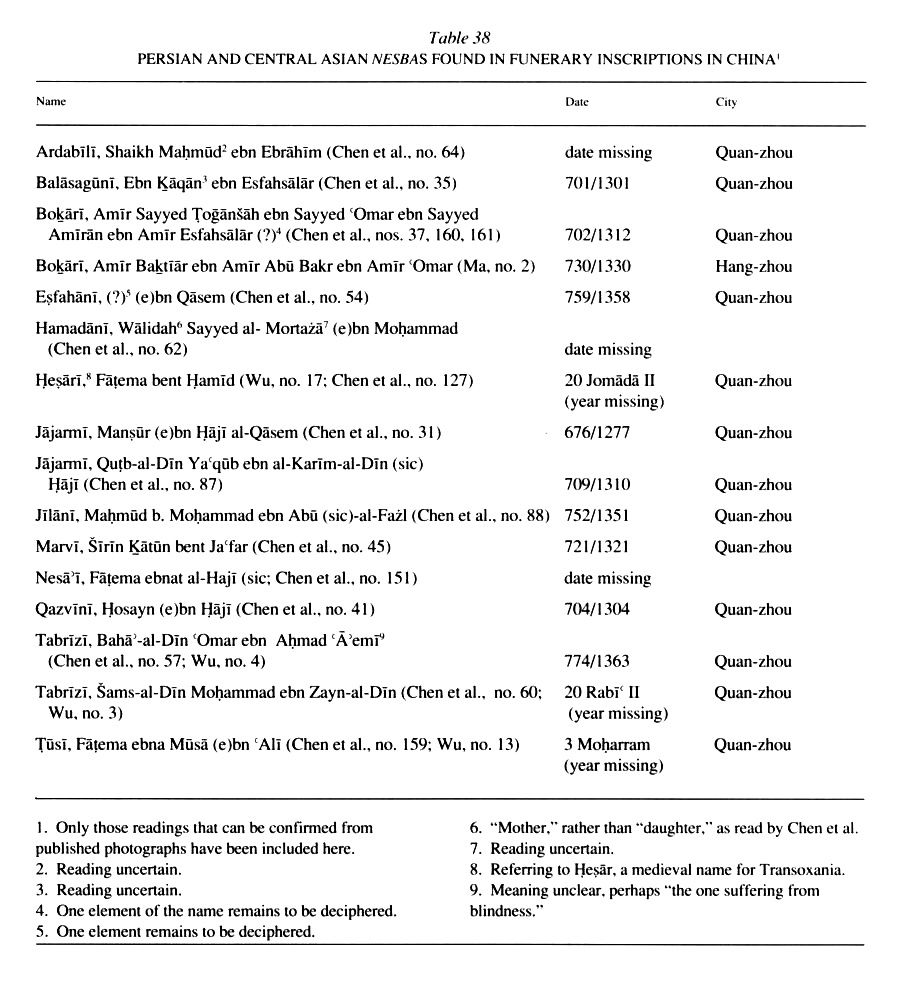
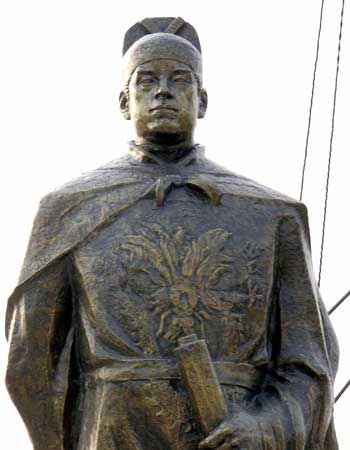 Statue of Chinese admiral of Persian descent, Zheng He (Picture source: Business Week)
Statue of Chinese admiral of Persian descent, Zheng He (Picture source: Business Week)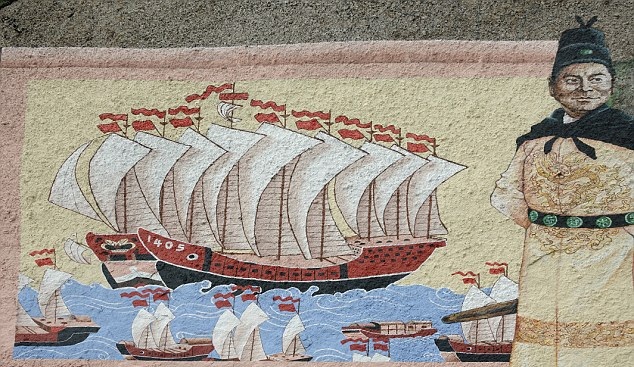 Chinese Admiral Zheng He is recognized for having sailed with his giant fleet to Europe and Africa. Historian Gavin Menzies has proposed that Zheng He also reached the New World (Source: Chris Heller/CORBIS & The Mail).
Chinese Admiral Zheng He is recognized for having sailed with his giant fleet to Europe and Africa. Historian Gavin Menzies has proposed that Zheng He also reached the New World (Source: Chris Heller/CORBIS & The Mail).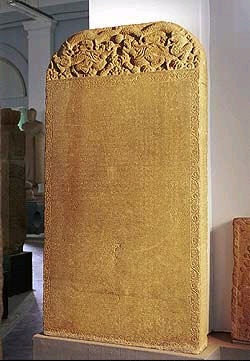 The Zheng He stele which has inscriptions in Chinese, Tamil and Persian languages (Source: 4.bp.blogspot). It is notable that Zheng He made a determined effort to pay equal homage to all of Sri Lanka’s religions.
The Zheng He stele which has inscriptions in Chinese, Tamil and Persian languages (Source: 4.bp.blogspot). It is notable that Zheng He made a determined effort to pay equal homage to all of Sri Lanka’s religions. 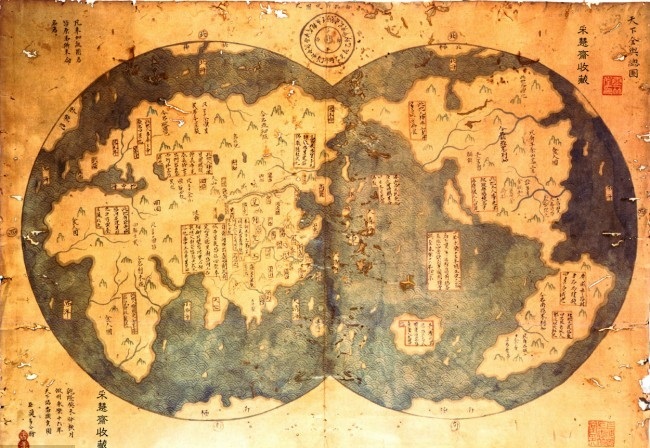 A Chinese map dated to 1418 which shows remarkable accuracy with respect to cartographic representation of all the continents, including North America. According to Gavin Menzies, Chinese knowledge of the Americas is derived from the voyages of Zheng He. This is interesting as Columbus did not set foot onto the New World until 1492; technically he had discovered islands off the coast of America which then opened the door to other voyages towards the New World. It was Amerigo Vespucci who actually reached America in 1498-99. More recently, the notion of Columbus being the first European to discover the Americas has also been challenged (Source: Chris Heller/CORBIS & The Mail).
A Chinese map dated to 1418 which shows remarkable accuracy with respect to cartographic representation of all the continents, including North America. According to Gavin Menzies, Chinese knowledge of the Americas is derived from the voyages of Zheng He. This is interesting as Columbus did not set foot onto the New World until 1492; technically he had discovered islands off the coast of America which then opened the door to other voyages towards the New World. It was Amerigo Vespucci who actually reached America in 1498-99. More recently, the notion of Columbus being the first European to discover the Americas has also been challenged (Source: Chris Heller/CORBIS & The Mail).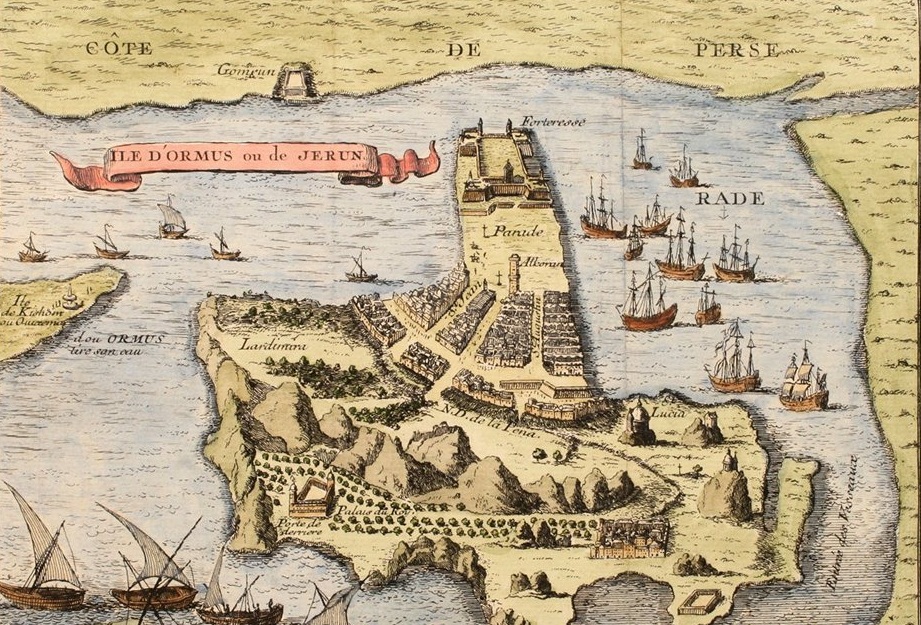 [Click to Enlarge] The Kingdom of Hormuz as depicted in a European map by Bellin in 1746 (Picture source: Map and Maps). Also known as Ohrmuzd, the term “Hormuz” is another variation of the Zoroastrian term “Ohrmazd” (the supreme monotheistic spiritual entity). By the 13th century Hormuz was under the rule of Persia. Zheng He made his final voyage to this island in the Persian Gulf.
[Click to Enlarge] The Kingdom of Hormuz as depicted in a European map by Bellin in 1746 (Picture source: Map and Maps). Also known as Ohrmuzd, the term “Hormuz” is another variation of the Zoroastrian term “Ohrmazd” (the supreme monotheistic spiritual entity). By the 13th century Hormuz was under the rule of Persia. Zheng He made his final voyage to this island in the Persian Gulf.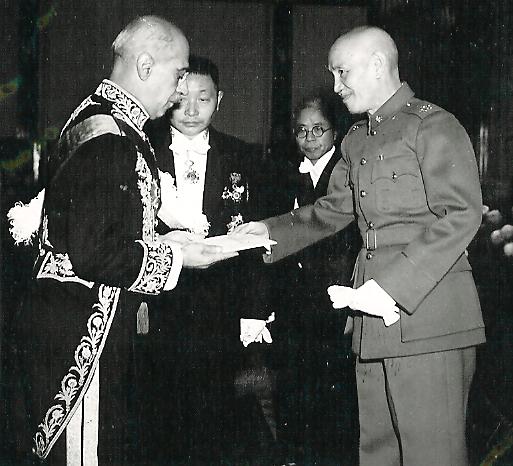 Ambassador of Iran to China, Mehdi Farrokh (1886-1973), greeted in Nanking by President of nationalist China, Chiang Kai Shek (1887-1975) in 1949. The two men developed a close friendship and often discussed the ancient ties of the Persianate and Chinese civilizations. Chiang Kai Shek became deeply embroiled in major battles against Mao Tse Tung’s Communist armies – Farrokh was to witness the occupation of Nanking by Mao’s troops. Chiang Kai Shek and the nationalist forces then fled to modern-day Taiwan.
Ambassador of Iran to China, Mehdi Farrokh (1886-1973), greeted in Nanking by President of nationalist China, Chiang Kai Shek (1887-1975) in 1949. The two men developed a close friendship and often discussed the ancient ties of the Persianate and Chinese civilizations. Chiang Kai Shek became deeply embroiled in major battles against Mao Tse Tung’s Communist armies – Farrokh was to witness the occupation of Nanking by Mao’s troops. Chiang Kai Shek and the nationalist forces then fled to modern-day Taiwan.




